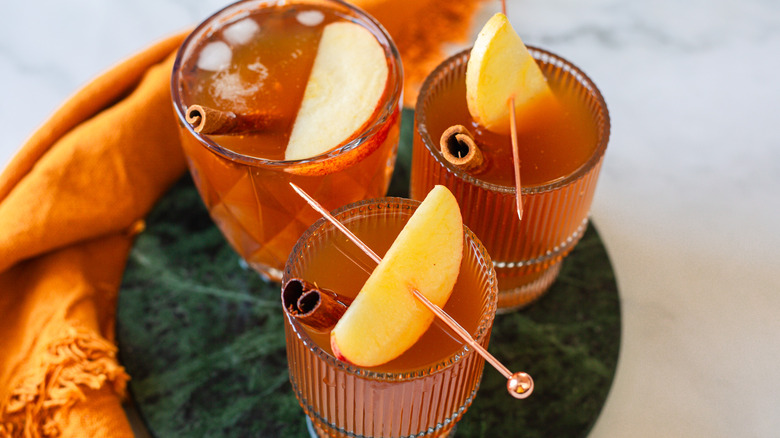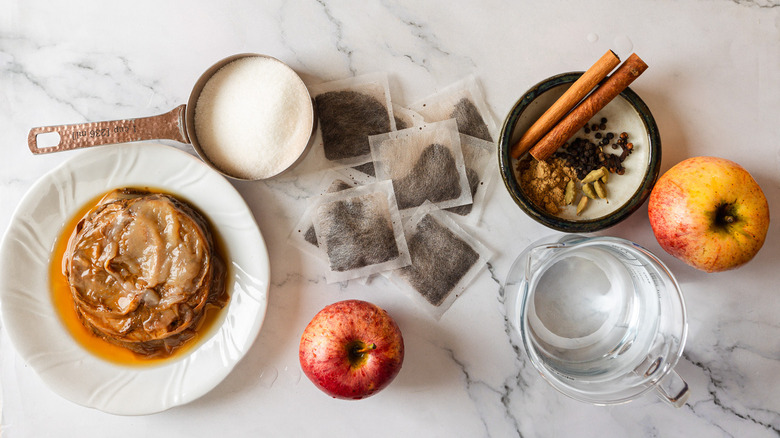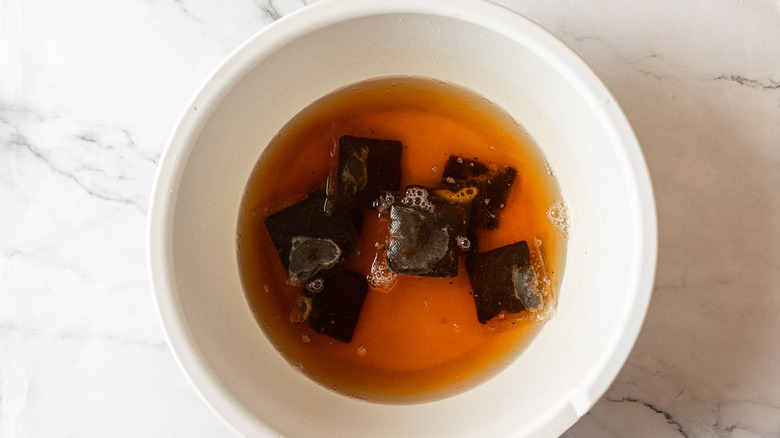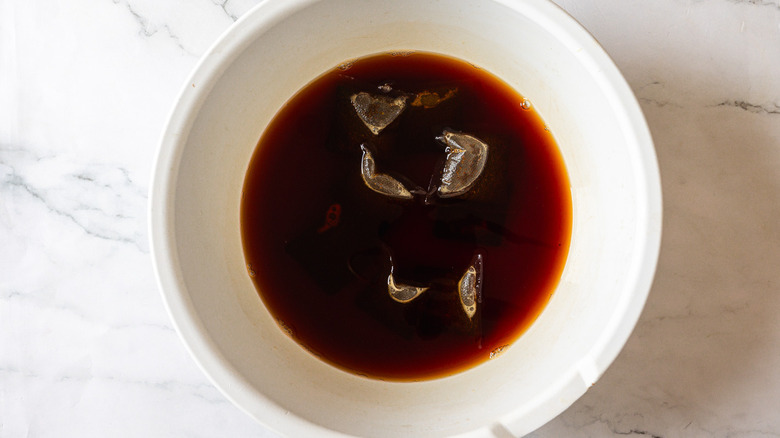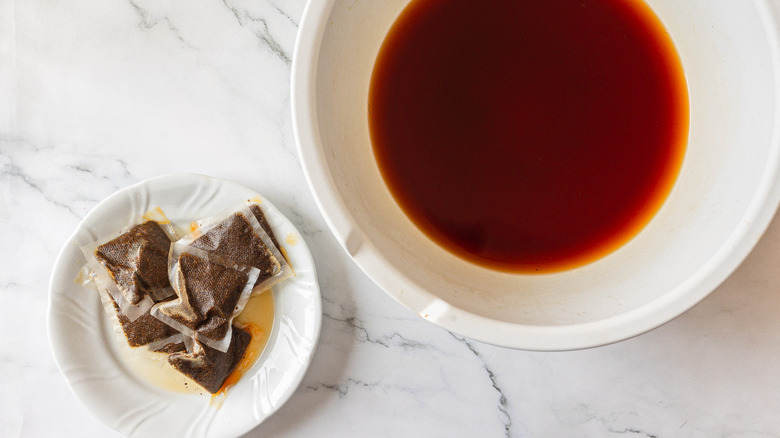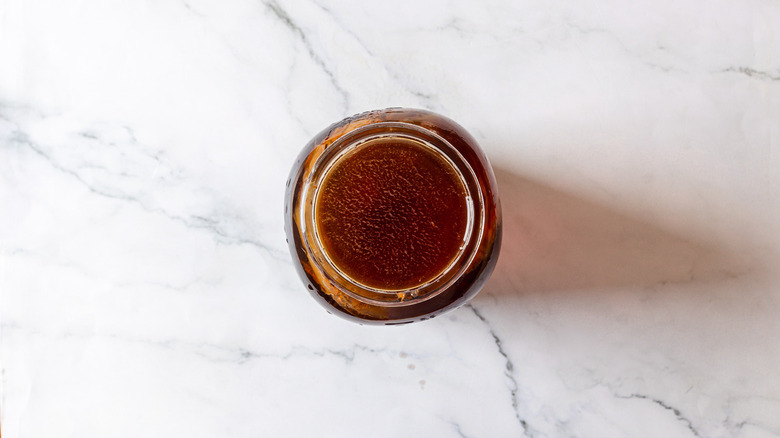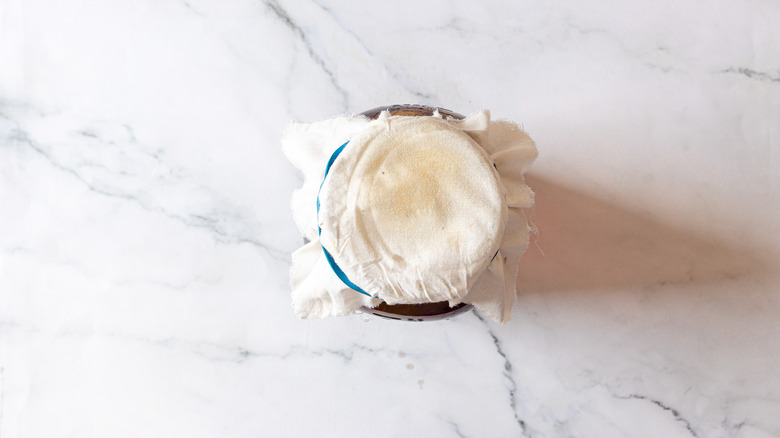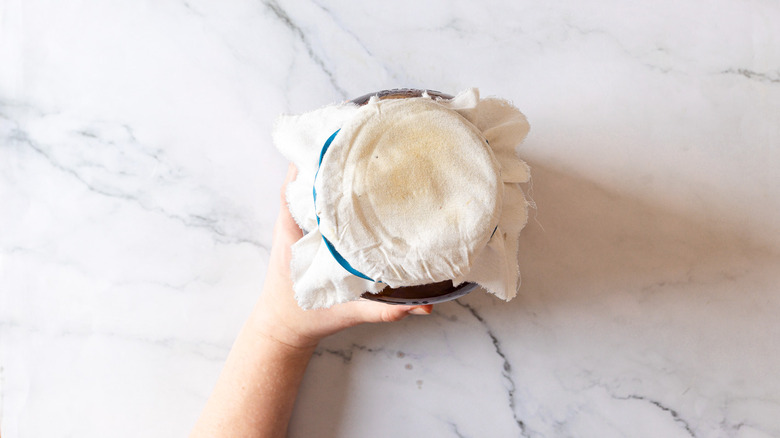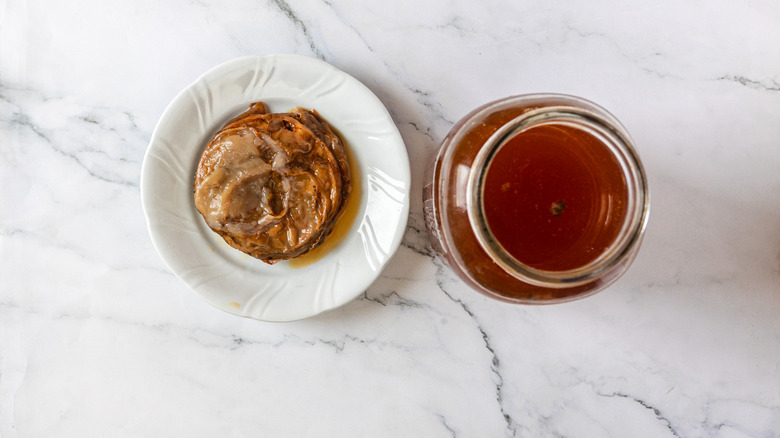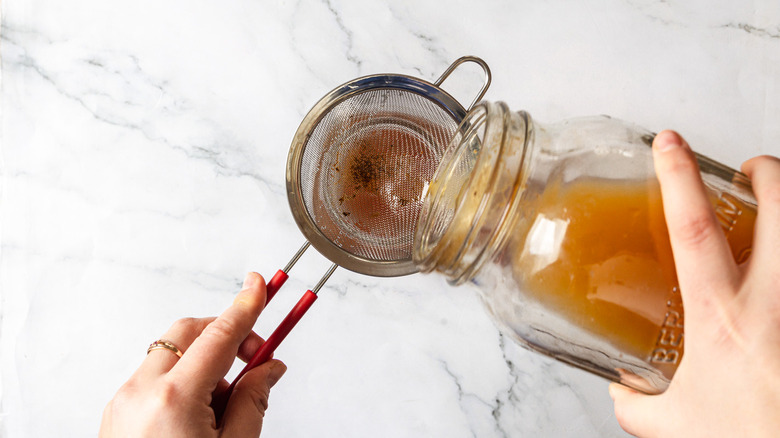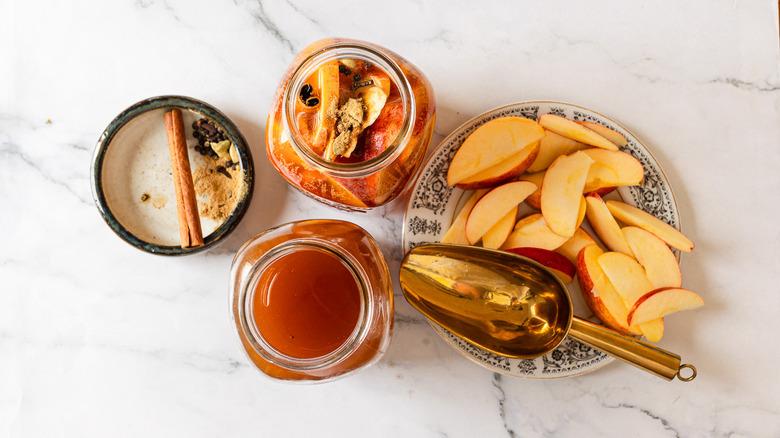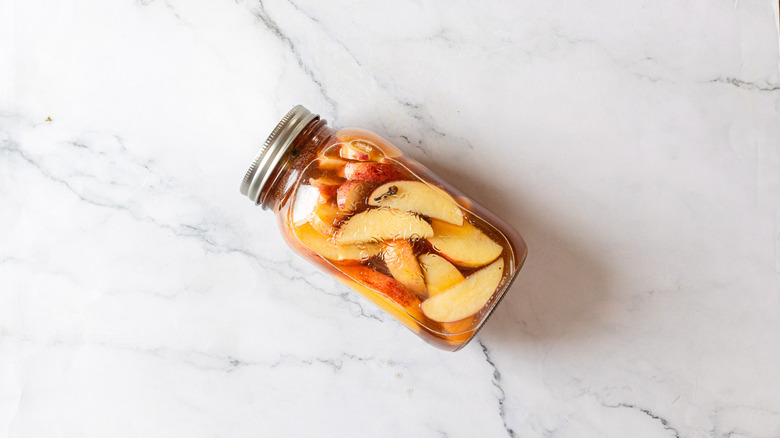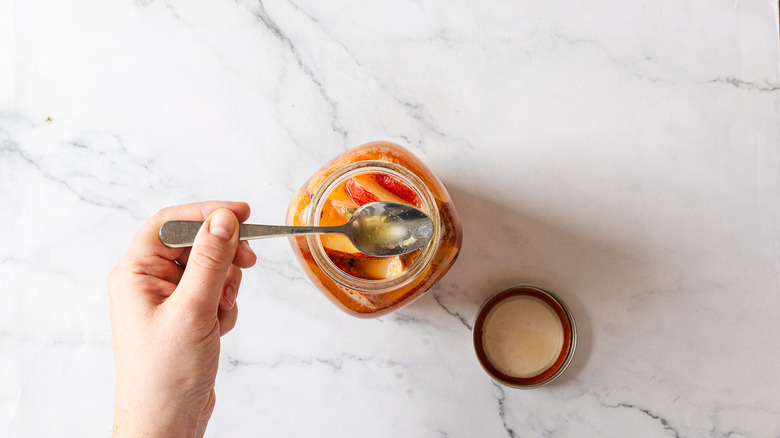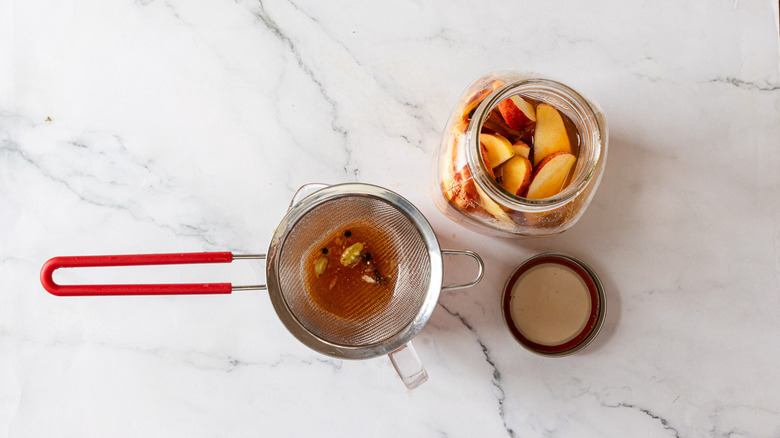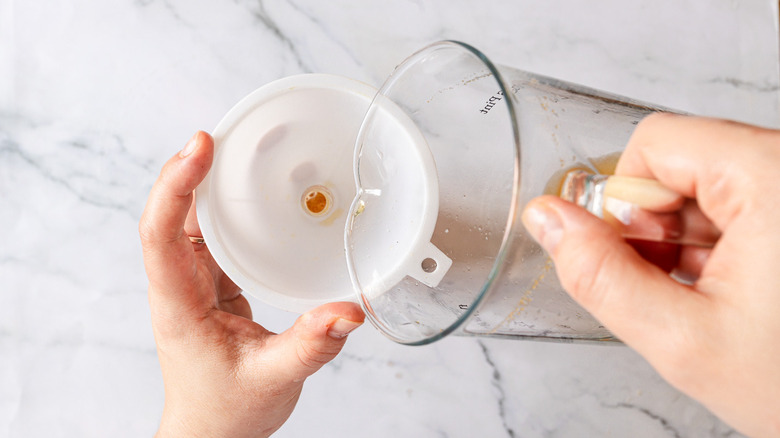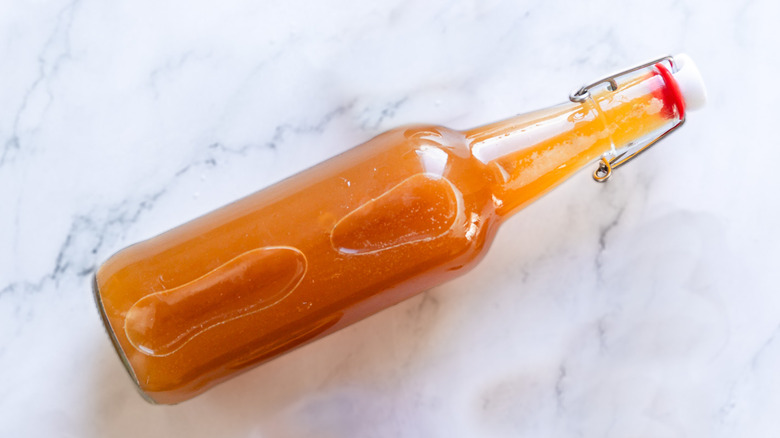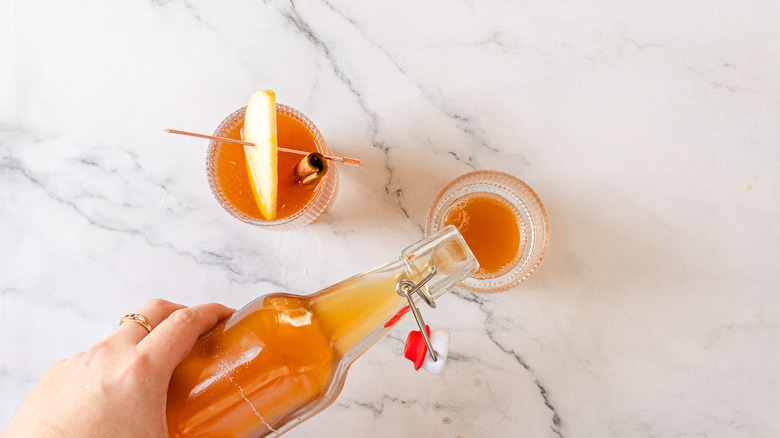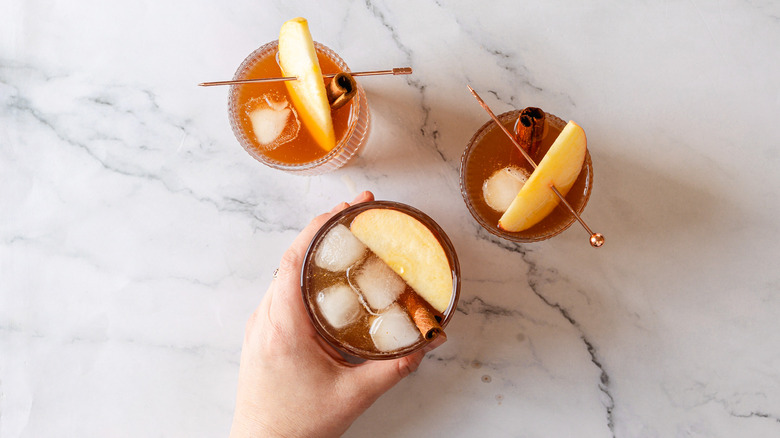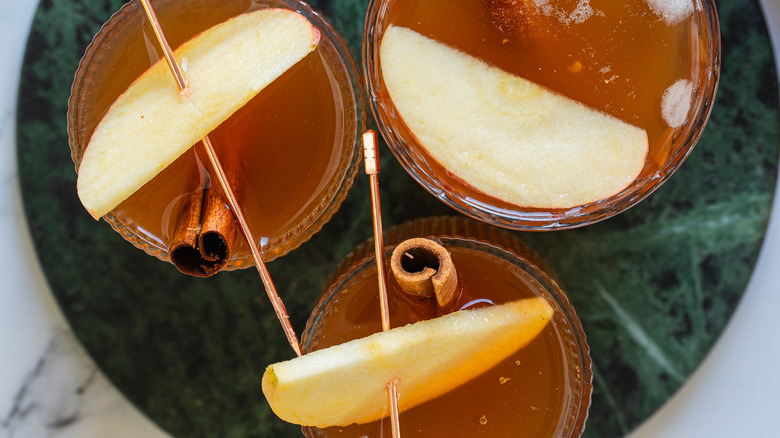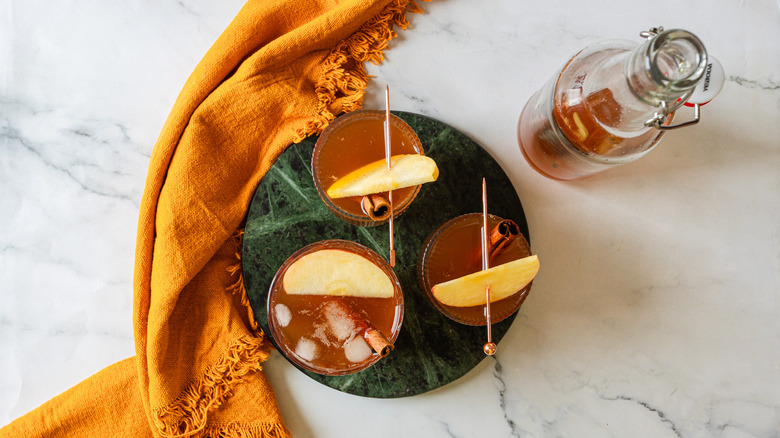Cinnamon Apple Chai Kombucha Recipe
Kombucha has long been a staple in health-conscious circles because of its gut-friendly probiotics. Chai, with its rich heritage and tasty blend of spices, has warmed many a soul on a chilly afternoon. But what happens when these two beloved beverages merge? The result is a tasty and healthy soda that you can make at home.
Chai kombucha, a fusion of the tangy, effervescent lightly-fermented tea known as kombucha and the aromatic spices of traditional Indian chai, is a perfect marriage of sweet, spicy, rich flavors. According to recipe developer Ksenia Prints of At the Immigrant's Table, this recipe combines the health benefits of kombucha, which may include managing blood sugar levels and helping with heart health, with the comforting spices found in chai, such as cinnamon, cardamom, and ginger, to create a refreshingly unique drink.
Our cinnamon-apple chai kombucha not only supports digestive health but also offers a flavorful twist to your hydration routine. Whether you're a seasoned kombucha maker or a health-conscious soda lover curious about taking their first steps in the world of kombucha brewing, this chai kombucha recipe might become your new favorite drink.
Gather the ingredients for chai kombucha
Making your first batch of chai-infused kombucha starts with an active SCOBY, which stands for the symbiotic culture of bacteria and yeast that is at the heart of kombucha's transformative magic. To feed this culture, we will need to brew tea from black tea bags, which will serve as the base, and add sugar, the fuel for fermentation. To infuse the chai flavors, you'll incorporate sliced gala apples and an aromatic mix of cinnamon sticks, whole cloves, crushed cardamom pods, and a touch of ground ginger. Whole black peppercorns will add a subtle, spicy kick.
Step 1: Brew the tea
Brew 1 gallon of black tea by combining the tea bags, sugar, and boiling water.
Step 2: Let the tea cool
Allow the tea to cool to room temperature, about 2 hours.
Step 3: Discard the tea bags
Remove the tea bags and discard.
Step 4: Transfer tea and SCOBY to a large jar
Pour the cooled tea into a clean, sanitized glass jar and carefully add the SCOBY.
Step 5: Cover the jar
Cover the jar with a clean cloth or coffee filter and secure it with a rubber band.
Step 6: Leave for the first fermentation
Place the jar in a warm, dark area and allow it to ferment for 7-10 days, or until it reaches your desired level of tartness (the length of the brewing time can vary by the season and the temperature in the room; taste the tea and stop the brewing when it is tart and sweet enough to your liking).
Step 7: Remove the SCOBY
Once the first fermentation is complete, carefully remove the SCOBY from the jar and set it aside.
Step 8: Strain the tea into two jars
Strain the kombucha into two clean, sanitized 1-quart glass jars, leaving about 2 inches of headspace at the top.
Step 9: Add the flavorings
Divide the sliced gala apples, whole cinnamon sticks, whole cloves, crushed cardamom pods, ground ginger, and black peppercorn evenly between the jars.
Step 10: Seal the jars for the second fermentation
Tightly seal the jars with a lid and allow the kombucha to ferment for an additional 3-5 days at room temperature to infuse the kombucha with the flavors of the apples and spices.
Step 11: Taste the kombucha
Taste the kombucha periodically to monitor the flavor development.
Step 12: Strain the apples and seasonings
Once the kombucha has reached the desired flavor, carefully strain out the apples and spices from the liquid.
Step 13: Transfer the kombucha to bottles
Pour the flavored kombucha into glass bottles, leaving about 1 inch of headspace at the top of each bottle.
Step 14: Seal the bottles and let carbonate
Tightly seal the bottles and allow them to carbonate at room temperature for 1-3 days, depending on the desired level of carbonation.
Step 15: Serve the kombucha
To serve, pour the chilled kombucha into glasses, garnished with a cinnamon stick or apple slice if desired. Keep leftover kombucha in bottles in the fridge.
How sweet should kombucha be, and can I adjust the amount of sugar used in this recipe?
The sweetness of kombucha is a matter of personal preference but also a crucial component in the fermentation process. The sugar added to kombucha isn't just for taste — it's the fuel that the SCOBY consumes to create the beverage's characteristic tang and fizz. In most kombucha recipes, a cup of sugar to a gallon of tea is the recommended starting point. This amount is designed to ensure that the SCOBY has enough food to ferment properly, resulting in a balance of sweetness and acidity. If you generally prefer less sweet drinks, you can consider reducing the sugar content to about ¾ cup. This slight adjustment will yield a drink that is less sweet while still providing enough energy for the SCOBY to work effectively. It's important to note, though, that decreasing the sugar too much can impede the fermentation process, leaving you with a flat and under-fermented brew.
It's a delicate balance to strike, and finding the right level for your taste might require some experimentation. Remember, the longer you wait, the less sweet and more tangy your drink will become. As the SCOBY digests the sugar, the sweetness will naturally diminish over time, so tasting your kombucha at different stages of fermentation can help you determine the ideal point to halt the process for your desired sweetness level.
What is a SCOBY and where can I get one?
A SCOBY, which stands for symbiotic culture of bacteria and yeast, is the essential ingredient for turning sweetened tea into the effervescent, fermented beverage known as kombucha. This gelatinous, pancake-like culture acts as a fermentation powerhouse, where the bacteria and yeast work together to process the sugars in the tea, transforming them into alcohol, carbon dioxide, and various acids. This fermentation process not only carbonates the beverage but also creates the distinctive sour flavor profile of kombucha and enriches it with probiotics.
To acquire a SCOBY, you have a few options. If you know someone who regularly brews kombucha, they can provide you with a portion of their SCOBY. Each batch of kombucha produces a new layer or "baby" SCOBY, so home brewers often have extras to share. Alternatively, SCOBYs can be purchased from a variety of health food suppliers and specialty shops that cater to home fermentation enthusiasts. It can also be found online, and these are typically shipped in a starter liquid to keep them alive during transit. Lastly, for the DIY-inclined, you can grow your own SCOBY from a bottle of store-bought, unpasteurized, unflavored kombucha. When you combine the commercial kombucha with sweetened tea and allow it to sit undisturbed in a warm environment, a new SCOBY will begin to form on the surface within a few weeks. Whichever method you choose, your SCOBY must come from a healthy, active culture to guarantee a successful fermentation process for your homemade kombucha.
Can I use other types of tea or sweeteners?
The best part of kombucha is experimenting with various flavors, and that includes your choice of teas and sweeteners. But before you start playing, it's important to understand how these changes might influence the fermentation process and the final taste of your beverage. Traditional kombucha is made with black tea and white sugar, which are known to yield consistent and reliable results. The SCOBY is well-adapted to these ingredients, and they provide a neutral foundation that showcases the tart, complex profile of the fermented tea.
If you're interested in experimenting, green tea and oolong tea are popular alternatives that impart a lighter, more floral or fruity flavor to your kombucha. However, avoid using flavored teas, because added oils or flavorings can harm the SCOBY or hinder fermentation. As for sweeteners, while white sugar is the standard for easy processing in fermentation, options like honey or maple syrup can be used to add depth and different notes to the flavor profile. Avoid raw honey, which can contain its own bacteria that can damage the health of the SCOBY.
When using alternative teas and sweeteners, monitor the progress of your kombucha closely. Alternative bases may take longer to ferment, or the balance of bacteria and yeast could shift, resulting in a different taste and level of carbonation. It's a balancing act that can lead to exciting variations in your homemade kombucha, but it requires careful attention to ensure a successful fermentation.
Cinnamon Apple Chai Kombucha Recipe
It takes about 18 days of fermentation to brew delicious chai kombucha, a tangy effervescent tea with the aromatic spices of traditional Indian chai.
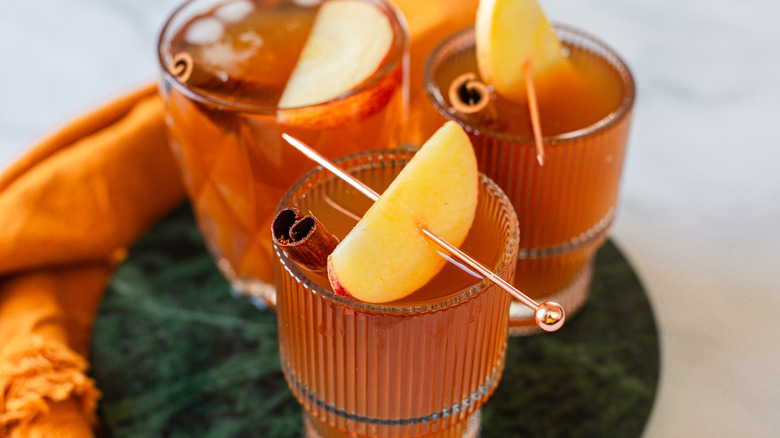
Ingredients
- 8 black tea bags
- 1 cup sugar
- 1 gallon water, boiling
- 1 SCOBY (symbiotic culture of bacteria and yeast)
- 2 gala apples, sliced
- 2 whole cinnamon sticks
- 6 whole cloves
- 4 crushed cardamom pods
- 1 teaspoon of ground ginger
- 1 teaspoon of whole black peppercorns
Directions
- Brew 1 gallon of black tea by combining the tea bags, sugar, and boiling water.
- Allow the tea to cool to room temperature, about 2 hours.
- Remove the tea bags and discard.
- Pour the cooled tea into a clean, sanitized glass jar and carefully add the SCOBY.
- Cover the jar with a clean cloth or coffee filter and secure it with a rubber band.
- Place the jar in a warm, dark area and allow it to ferment for 7-10 days, or until it reaches your desired level of tartness (the length of the brewing time can vary by the season and the temperature in the room; taste the tea and stop the brewing when it is tart and sweet enough to your liking).
- Once the first fermentation is complete, carefully remove the SCOBY from the jar and set it aside.
- Strain the kombucha into two clean, sanitized 1-quart glass jars, leaving about 2 inches of headspace at the top.
- Divide the sliced gala apples, whole cinnamon sticks, whole cloves, crushed cardamom pods, ground ginger, and black peppercorn evenly between the jars.
- Tightly seal the jars with a lid and allow the kombucha to ferment for an additional 3-5 days at room temperature to infuse the kombucha with the flavors of the apples and spices.
- Taste the kombucha periodically to monitor the flavor development.
- Once the kombucha has reached the desired flavor, carefully strain out the apples and spices from the liquid.
- Pour the flavored kombucha into glass bottles, leaving about 1 inch of headspace at the top of each bottle.
- Tightly seal the bottles and allow them to carbonate at room temperature for 1-3 days, depending on the desired level of carbonation.
- To serve, pour the chilled kombucha into glasses, garnished with a cinnamon stick or apple slice if desired. Keep leftover kombucha in bottles in the fridge.
Nutrition
| Calories per Serving | 24 |
| Total Fat | 0.0 g |
| Saturated Fat | 0.0 g |
| Trans Fat | 0.0 g |
| Cholesterol | 0.0 mg |
| Total Carbohydrates | 5.9 g |
| Dietary Fiber | 0.3 g |
| Total Sugars | 5.4 g |
| Sodium | 3.8 mg |
| Protein | 0.1 g |
